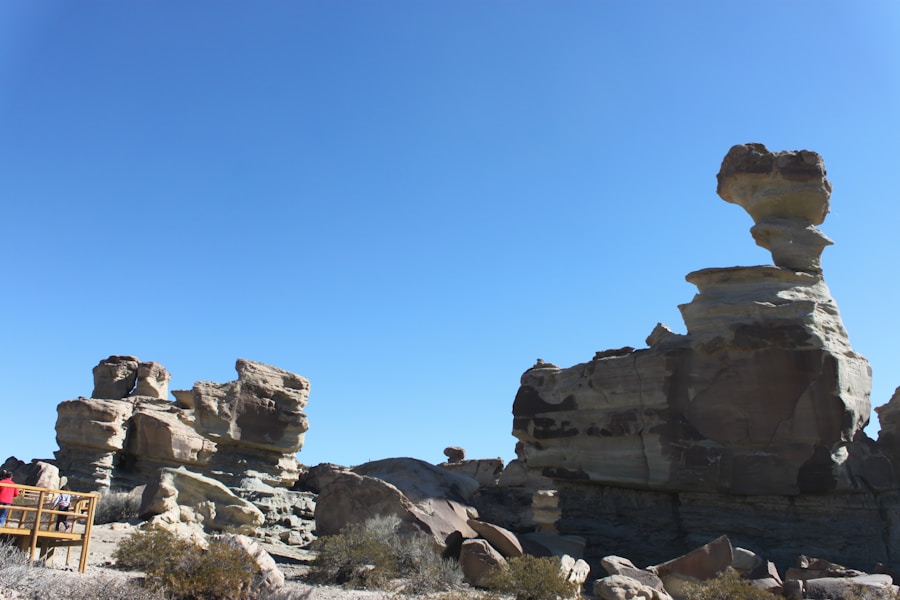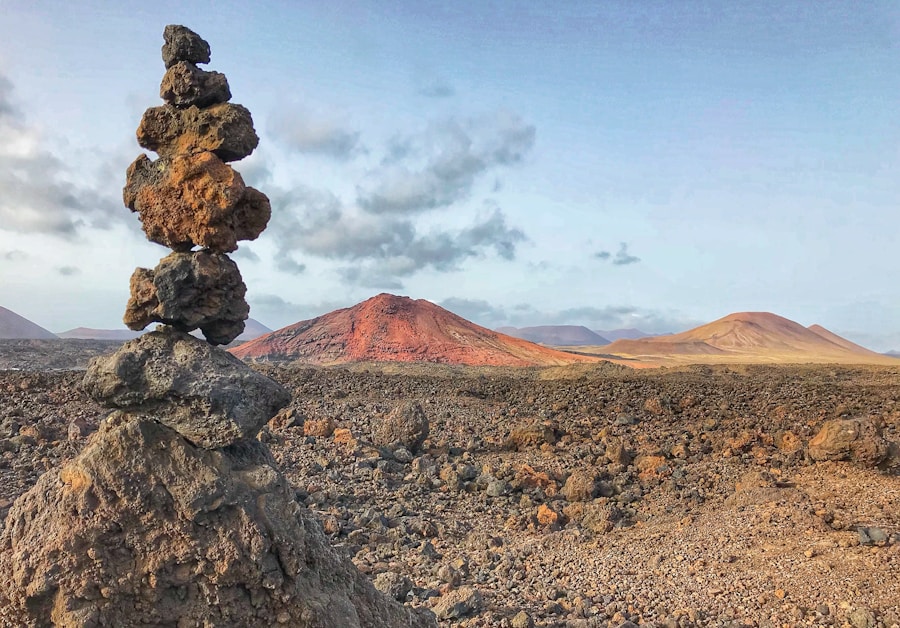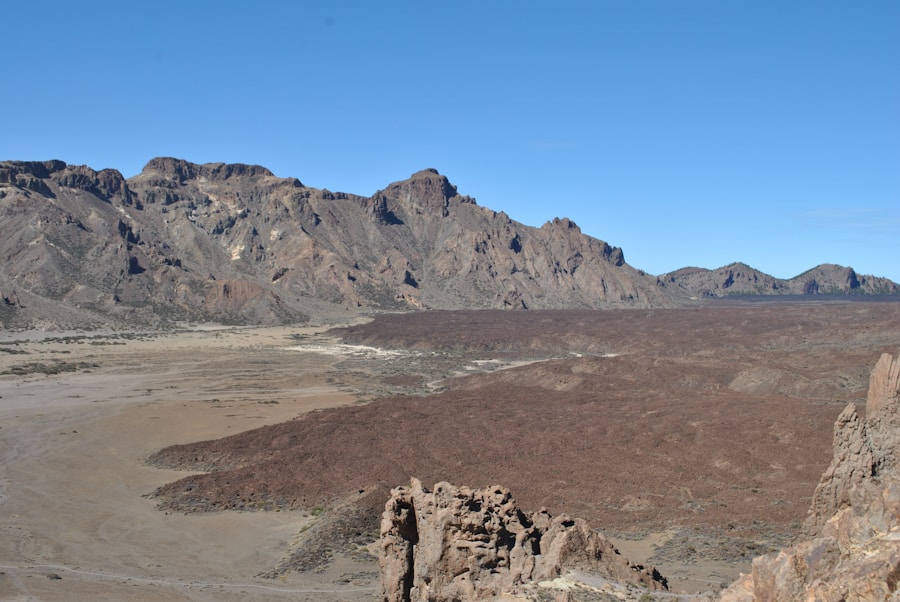Bibhutibhusan Bandyopadhyay, a luminary in Bengali literature, is often celebrated for his evocative storytelling that captures the essence of nature and human experience. One of his notable works, “Moon Mountain,” serves as a literary gateway to the Richtersveld, a stark yet breathtaking desert region in South Africa. This area, characterized by its rugged terrain and unique geological formations, has become a focal point for adventurers and nature enthusiasts alike.
The narrative woven by Bandyopadhyay not only highlights the physical beauty of the landscape but also delves into the deeper connections between humanity and the natural world. The Richtersveld is not merely a backdrop for Bandyopadhyay’s tale; it is a character in its own right, influencing the lives of those who inhabit it. The author’s vivid descriptions transport readers to a place where the moonlight dances on the rocky outcrops and the silence of the desert is punctuated only by the whispers of the wind.
Through his lens, we are invited to explore not just the geographical features of Moon Mountain but also the emotional and spiritual journeys that unfold within this extraordinary setting. The interplay between man and nature, as depicted in “Moon Mountain,” serves as a reminder of our intrinsic connection to the earth and the stories it holds.
Key Takeaways
- Bibhutibhusan’s Moon Mountain is a captivating account of a journey through the Richtersveld, offering a unique perspective on the landscape and its cultural significance.
- The Richtersveld landscape is characterized by its rugged beauty, with dramatic rock formations, expansive plains, and a diverse array of plant and animal life.
- Moon Mountain holds great cultural significance for the indigenous Nama people, who consider it a sacred site and an important part of their heritage.
- The Richtersveld is home to a rich variety of flora and fauna, including unique succulent plants, desert-adapted wildlife, and a stunning array of bird species.
- Climbing Moon Mountain is a challenging and rewarding adventure, offering breathtaking views of the surrounding landscape and a sense of accomplishment for those who reach the summit.
- Preserving the Richtersveld is crucial for future generations, as it is not only a valuable natural and cultural heritage site, but also a source of inspiration and wonder for all who visit.
The Beauty of the Richtersveld Landscape
The Richtersveld is a UNESCO World Heritage Site, renowned for its dramatic landscapes that evoke a sense of awe and wonder. The region is characterized by its stark contrasts—rugged mountains rise abruptly from the arid plains, while deep ravines and dry riverbeds carve their way through the terrain. The colors of the landscape shift with the sun, transforming from deep browns and reds during the day to ethereal purples and blues at dusk.
This dynamic palette creates an ever-changing canvas that captivates photographers, artists, and nature lovers alike. One of the most striking features of the Richtersveld is its unique geological formations, including Moon Mountain itself. This mountain, with its distinctive shape resembling a crescent moon, stands as a sentinel over the surrounding landscape.
The rock formations are not only visually stunning but also hold geological significance, offering insights into the earth’s history. The ancient volcanic activity that shaped this region has left behind a tapestry of minerals and stones that tell a story of time and transformation. As one traverses this rugged terrain, it becomes evident that every rock and crevice has a tale to tell, echoing the natural forces that have sculpted this remarkable environment.
The Cultural Significance of Moon Mountain

Beyond its physical beauty, Moon Mountain holds profound cultural significance for the indigenous Nama people who have inhabited the Richtersveld for centuries. For these communities, the mountain is not just a geographical landmark; it is a symbol of identity and heritage. The Nama people have woven stories and legends around Moon Mountain, imbuing it with spiritual meaning that transcends its physical presence.
These narratives often reflect their deep connection to the land, illustrating how nature shapes their worldview and cultural practices. The cultural practices of the Nama people are intricately linked to their environment. Traditional songs, dances, and rituals often celebrate the natural elements surrounding them, with Moon Mountain serving as a focal point in many of these expressions.
The mountain is seen as a guardian of their history and traditions, embodying the resilience and adaptability of a people who have thrived in one of the harshest climates on earth.
Exploring the Flora and Fauna of the Richtersveld
The Richtersveld is home to an astonishing array of flora and fauna that have adapted to its arid conditions. Despite its harsh environment, this desert region boasts over 1,000 plant species, many of which are endemic to the area. The unique adaptations of these plants allow them to thrive in extreme conditions; for instance, succulents store water in their leaves, while others have developed deep root systems to access underground moisture.
The iconic quiver tree (Aloe dichotoma) stands tall against the backdrop of Moon Mountain, its striking silhouette adding to the surreal beauty of the landscape. Wildlife in the Richtersveld is equally diverse, with species ranging from small reptiles to larger mammals like springbok and gemsbok. The desert’s inhabitants have evolved remarkable survival strategies to cope with limited water resources and extreme temperatures.
For example, many animals are nocturnal, emerging at night when temperatures drop, while others have developed physiological adaptations that minimize water loss. Birdwatchers will find delight in spotting various avian species that inhabit this unique ecosystem, including raptors that soar above the mountains and colorful songbirds that flit among the shrubs.
The Adventure of Climbing Moon Mountain
Climbing Moon Mountain presents an exhilarating challenge for adventurers seeking to experience the Richtersveld from a new perspective. The ascent is not merely a physical endeavor; it is an opportunity to connect with nature on a profound level. As climbers navigate rocky paths and steep inclines, they are rewarded with breathtaking views that stretch across the vast desert landscape.
Each step taken towards the summit reveals new vistas—valleys bathed in golden sunlight, distant mountains shrouded in mist, and an expansive sky that seems to stretch into infinity. The journey up Moon Mountain is also steeped in personal reflection. As climbers pause to catch their breath or take in the scenery, they often find themselves contemplating their place within this majestic environment.
The solitude of the climb allows for moments of introspection, where one can appreciate not only the beauty surrounding them but also their own resilience in overcoming challenges. Reaching the summit is not just about conquering a peak; it symbolizes a deeper connection to nature and an understanding of one’s own capabilities.
Preserving the Richtersveld for Future Generations

As awareness grows regarding the ecological significance of regions like the Richtersveld, so too does the imperative to preserve these landscapes for future generations. Conservation efforts are crucial in maintaining the delicate balance between human activity and environmental sustainability. Initiatives aimed at protecting biodiversity, promoting responsible tourism, and engaging local communities are essential components of these efforts.
By fostering a sense of stewardship among visitors and residents alike, we can ensure that the natural beauty and cultural heritage of places like Moon Mountain endure. Education plays a pivotal role in conservation efforts within the Richtersveld. By raising awareness about the unique ecosystems and cultural narratives tied to this region, we can inspire individuals to take action in support of preservation initiatives.
Community involvement is equally important; empowering local populations to participate in conservation efforts not only helps protect their heritage but also strengthens their connection to the land.
If you enjoyed reading Bibhutibhusan’s Moon Mountain: A Richtersveld Journey, you may also be interested in exploring the rich philosophical traditions of India. Check out this insightful article on Contemporary Indian Philosophy: Synthesis, Contextualization, and Pluralism to delve deeper into the diverse and complex philosophical landscape of India.






















+ There are no comments
Add yours